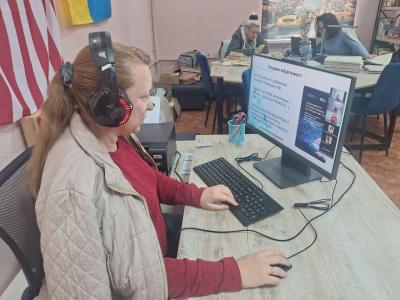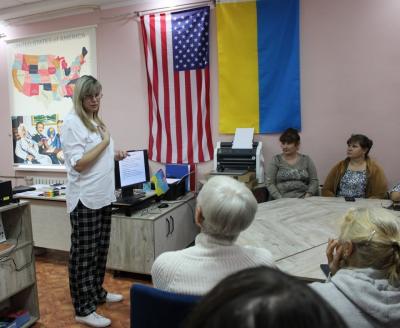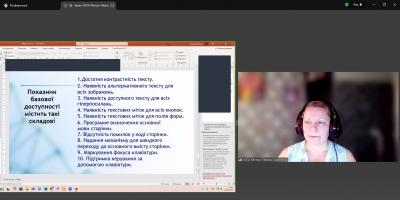Women Printers and Publishers in Colonial America
Women Printers and Publishers in Colonial America
"A proclamation from the governor by order of the king".
"A ship arriving from England carrying eagerly awaited supplies, needed for daily life".
"The marriage or death of an important citizen".
All of these events "were news. In the earliest days of the North American colonies, the only way this news could be broadcast was through a town crier or personal announcement. But this changed in 1638, when a Mistress Glover arrived in Boston -with the first printing press in North America. She had left England with her husband, who died during the long sea voyage. Mistress Glover carried out his plans and established a print shop in Cambridge, Massachusetts. Thus, the very First printing press in America was owned by a woman.
Like other colonial printers who followed, Mistress Glover's shop printed advertisements, pamphlets, legal and business forms, almanacs, and prayer books. Occasionally she printed broadsides to announce special events and important news. Broadsides were large sheets of paper printed with news that were hung in public for people to read. As the colonies grew, the occasional broadsides evolved into weekly publications. Printers became publishers, editors, and writers, as well as typesetters and compositors. These early newspapers contained four pages filled with local news and letters from readers, stories reprinted from other papers, and advertisements. Like today, these advertisements provided a major source of income to the printer.
Most colonial print shops were owned by men, but often their wives, daughters, or sisters helped to run the business. Many of these women continued publishing when the man died. By the start of the Revolutionary War in 1775, there were at least fourteen women printers/publishers in the colonies.
Publishing a colonial newspaper was no easy task, especially for a woman. First, she had to write the stories with her quill pen. She had to choose and proofread which stones to use from other writers. Announcements and advertisements had to be collected. When she decided on all of an issue's contents, she laid out one page at a time and hand-cut the paper. Then, she did the typesetting by placing every metal letter of every word into a composing stick, which had to be inked. In warm weather, the ink might be too runny, and in the winter, both the ink and the paper might freeze. The entire process was a slow, tedious, messy job. On average, it took four days to prepare a four-page paper. Finally, the publisher had to turn the hand-crank to run the press. Once printed and dried, she would place the papers out for sale.
In addition to -writing the stories and producing the newspaper, the printer solicited subscribers and advertisers and then collected the money they owed her. Of course, a woman printer also ran her household — preparing food, making soap and candles, sewing clothing, and taking care of her young children.
As trouble erupted between the colonies and England, those women who supported American independence put themselves at great personal risk by using their papers to speak out. Some, like Margaret Draper of Massachusetts remained loyal to the king of England and put themselves in danger by incurring the anger of the patriots. After the war, fearing for her life, Draper fled to Nova Scotia and later to England. Others who supported the cause of freedom wrote editorials pointing out the king's repressive policies. These patriots printed excerpts from Tom Paine's famous pamphlets (as well as the pamphlets themselves) calling for independence. When the struggle erupted into war, the printers kept their readers informed of the war's progress and urged their readers to help the cause.
One of the first women to publish in the colonies was Elizabeth Timothy, who was born and raised in Holland and emigrated to America in 1731 with her husband Lewis and their four children. Shortly after their arrival in Philadelphia, the Timothy’s agreed to purchase the Gazette from Benjamin Franklin. For five years, Elizabeth ran the household and raised their children. In 1738, when Lewis died, Elizabeth kept the business going until her son Peter was old enough to take over in 1 746. Elizabeth then opened a bookstore and stationery shop next door.
Elizabeth Timothy had a much better knack for business than her husband. Because he was slow m collecting money owed him, his payments to Franklin were often late. But when Elizabeth took over, she refused to accept advertising from anyone who didn't pay on time. She did such a good job running the paper that Benjamin Franklin wrote about her in his autobiography, saying:
“She continue to account with the greatest Regularity and Exactitude every Quarter afterwards; and managed the Budinedd with such Success that she not only brought up reputably a Family of Children, but at the Expiration of the Term was able to purchase of ‘me the Printing Ноuse and establish her Son in it”.
Franklin praised Elizabeth as much for her ability as a mother as for her business skills. But she was, indeed, an excellent businesswoman and journalist.
Ann Donovan became part of the Timothy family when she married Peter Timothy in 1745. For thirty-six years, while Peter ran the paper, Ann attended to her household and raised her children. The family eventually moved to South Carolina, where Peter Timothy continued as a publisher. In 1782, Peter died in a shipwreck, and Ann Donovan Timothy followed in her mother-in-law's footsteps. She took her husband's place as printer/publisher of the paper and did such a good job that she was eventually named official printer to the state of South Carolina. Ann published the paper until her death in 1792. She left the paper to her son, Benjamin Franklin Timothy, who continued publication until he retired in 1802. The Gazette, South Carolina's first newspaper, provided news for the people of Charleston for nearly seventy years. If it were not for Elizabeth and Ann, this - would not have been possible. In 1975, the South Carolina chapter of Women in Communications placed a plaque at Charles Towne Landing, the site of the first South Carolina Colony, in Elizabeth's honor as the first American woman publisher.
Another important woman of colonial-era publishing was Sarah Updike Goddard. Born in 1700 in a small Rhode Island town, Sarah received an unusual education for a girl of her time. Taught by a tutor in her father's home, she learned both Latin and French, along with her English and other studies. In 1735, she married Giles Goddard, a doctor. The young couple moved to New London, where Giles practiced medicine and acted as postmaster. When Giles became ill in 1755 and could no longer perform as postmaster, Sarah took over. She also made plans for her family's future by apprenticing her fifteen-year-old son William to a printer. As an apprentice, William lived with the printer and worked for him -while he learned the trade. Giles Goddard died in 1757, and when William completed his apprenticeship in 1762, the family moved to Providence, Rhode Island, where Sarah purchased equipment to set up a print shop.
According to the custom of the times, women did not conduct business on their own. William was the official owner of the paper, but in fact, William, Sarah, and her daughter Mary Katherine ran the business together. They published one of the city's first newspapers, the Providence Gazette. William, like his father before him, was still interested in the postal system, and he eventually became postmaster of Providence. Because the Gazette didn't do as well as William had hoped, he left Providence for New York in 1765 in search of a more profitable business. When he left, he suspended publication of the newspaper, but his mother and sister continued to print and sell books, almanacs, pamphlets, and other materials. Sarah also acted as postmistress, taking over William's job, just as she had for her husband. Sarah and Mary printed a special edition of the Gazette under the name S. & W. Goddard. The special edition was to protest the British Stamp Act, a royal tax on publications and legal documents. The Goddard women resumed regular publication of the Gazette in 1766, and the masthead identified the publishers as Sarah Goddard and Company (the "company" was Mary).
When Sarah died in 17/0, a eulogy publicly recognizing her success as a newspaperwoman was printed in a New York and a Providence paper. Part of it read:
. . . she discovered an extraordinary genius and taste for, and made a surprising progress in most kinds of useful and polite learning, not only in the accomplishments to which female education is usually confined but in languages, and several branches of mathematics. . . the credit of the paper (the Gazette) was greatly promoted by her virtue, Ingenuity and abilities . . ."
In 1773, Mary ran the Philadelphia paper and William moved to Baltimore, where he began the Maryland Journal. The following year, once again answering her brother's call for help, Mary sold the Philadelphia paper to run the one in Baltimore while William concentrated on designing a new postal system. The Maryland Journal was published under Mary's name and was the only paper in Baltimore during most of the Revolutionary War. Mary's print shop produced the first signed copies of the Declaration of Independence. One of these rare copies is displayed today at the Smithsonian Institution.
Mary Goddard was credited with being an expert typesetter, and her paper was said to be among the best newspapers of the colonies. Staunchly patriotic, Mary reported on the cruelties of British soldiers and "wrote editorials urging women to raise their own wool and flax so the colonies could be less dependent on goods from Britain. After the war, Mary struck a blow for freedom of the press by successfully suing someone who had threatened her for printing an article she didn't like. After a quarrel with William, Mary left the paper and opened a book and print shop.
Besides running the paper before and during the Revolution, Mary -was appointed as postmaster of Baltimore in 1775. This made her the first woman to hold a federal office. In 1784, she hired a mailman, beginning one of the first postal delivery services in the country. Mary held the position of postmaster for fourteen years before she was replaced by a man in 1789. The job required some travel, and in this era a man could travel more easily and freely than a woman. But many people thought Alary could handle the job, and more than two hundred citizens signed a petition to allow her to remain as postmaster. Unfortunately, the petition failed, and Mary lost her job. She did, however, continue to run her bookstore until she retired in 1809 or 1810. She died in 1816.
The Goddard’s, the Timothy’s, and many other brave women of colonial America helped to lay the foundations for both American journalism and for the woman's place in journalism.|
This information is only for education purpose, and was taken from ' Extraordinary Women Journalists' by Claire Price-Groff.- Children's Press, USA










